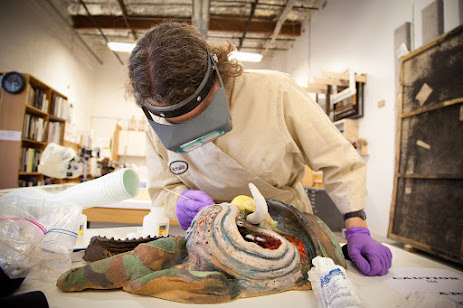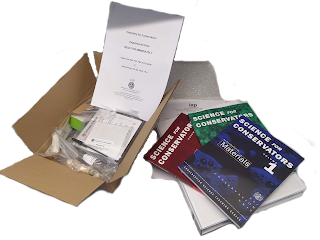Cold As Ice/Feelin' Hot Hot Hot - Collections Environment Monitoring
Sometimes I wonder if I take the whole domestic curator thing to a silly degree. That's right, the loft now sports an environment monitor...
Shiny. Not sure if it's environmentally friendly but it's definitely environmentally monitory.
I've been a bit concerned for a while about the climate in the loft which, like most attics, tends to get very warm in summer and very cold in winter and, crucially, holds some family archive material and other assorted stuff we don't want to get ruined. Just to complicate matters, different materials prefer different climates - organic artefacts for example like a certain amount of moisture in the air to prevent drying out/cracking, whereas metal stored in the same conditions might have an increased tendency to rust. Too much moisture promotes mould, too little can make paper objects brittle. Fun.
*N.B. I am not an expert here! I've worked with collections for a decade but my knowledge of museum climates and object conservation is strictly journeyman. If you want expert advice talk to the good folk of The Institute of Conservation. Splendid chaps, all of them.*
There's different schools of thought and standards around the sector regarding the optimum climate for collections stores, but I've usually worked with a range of 40-60% relative humidity and 16-20 centigrade being preferable. While reconciling myself to the fact that we're never going to get complete control of the loft's environment as, let's face it, attic spaces are never ideal for collection storage, I want to find out how far the climate fluctuates and to what extremes. Basically I want to know if our attitude should be 'Not great, not terrible', or 'Argh! The environment's coming out of the goddam walls, man!' , and thus need a monitor.
Environment monitors are available from many places to suit many budgets. Going with cosy familiarity I've chosen the EL-WiFi-TH Temp. & Humidity Data Logger from Files Thru The Air (with the greatest of ease...) I've installed these in a previous museum and, although not the most sophisticated model around, have found they do a perfectly serviceable job of telling you when things go up or down and when - which to a great extent is all you need. I especially like the cloud data feature which lets you peruse the data from the comfort of your own throne - a far cry from my first museum where we had to climb ladders in draughty barns to read the monitors manually (Spoilers - it was cold. Except in summer when it was BOILING)
I like graphs. Liking is the same as understanding, right?
Having popped into the loft to install (i.e. dump on a shelf for the time being) the monitor, the difference between the mid-December house climate and the loft is considerable. As you can see, within half an hour of installation the sensor is reporting 65% humidity and 11 degrees centigrade. This isn't ideal by a long stretch. It's also not surprising. Maybe in the long run we'll need to have some constant low-level heating in the loft during winter, although as in museums with finite resources (i.e. most museums) 'need' will be defined by a) cost and b) how much we reckon various papers, photographs, heirlooms and old toy trains are likely to deteriorate.
In the meantime I will continue to monitor the, erm, monitor.





Comments
Post a Comment